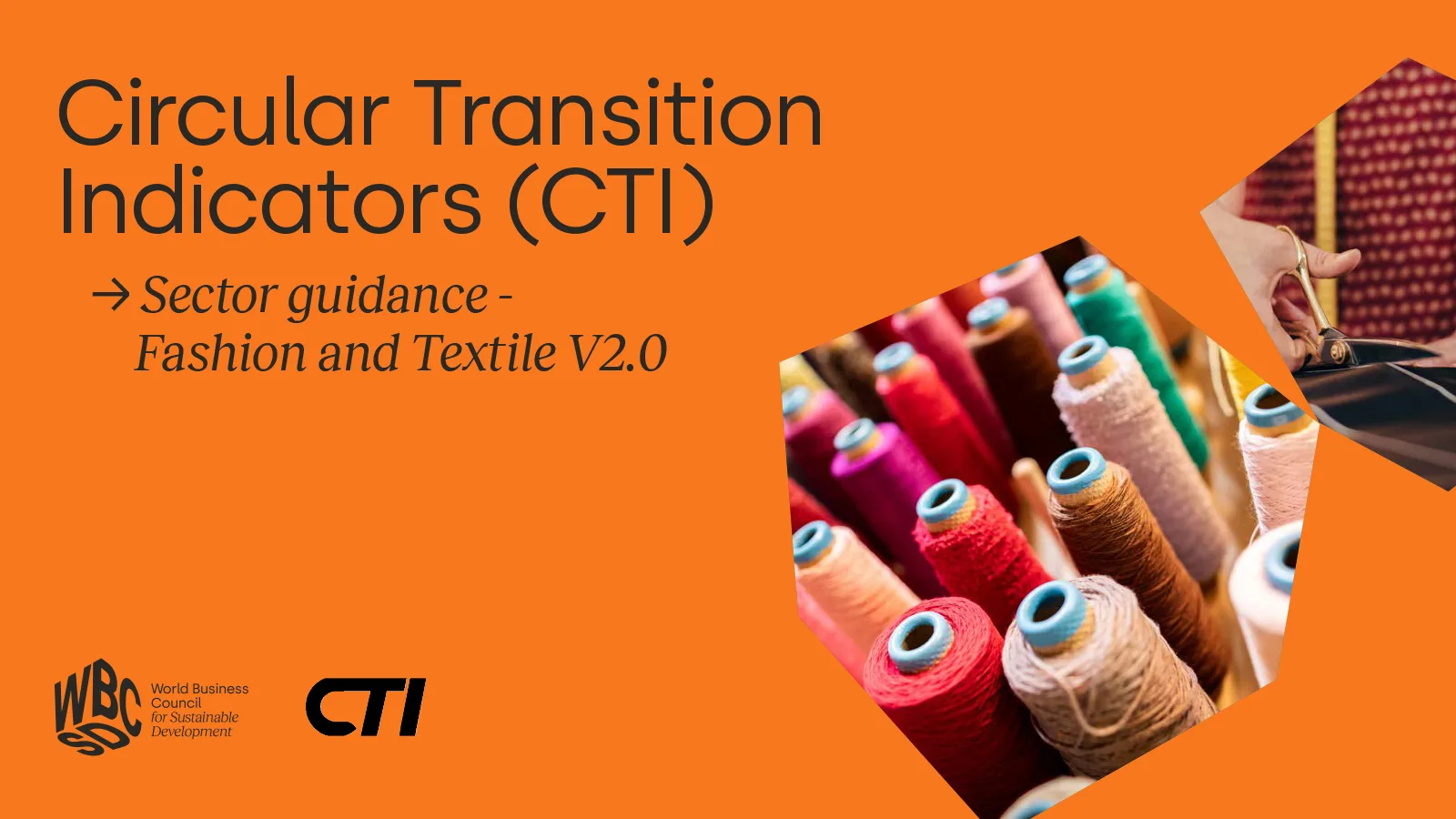CTI sector guidance – Fashion and Textile v2.0
Published: June 4, 2025

The global textile industry consumes 3.25 billion tonnes of materials annually, yet recirculates just 0.3%, leaving more than 99% sourced from virgin. One in three garments goes unsold, while quality and durability decline due to the rise of synthetic, volume-driven production materials (Circle Economy, 2024). This is unsustainable.
Dependence on virgin resources exposes businesses to significant operational risks, while also driving environmental degradation and social harm. Environmental pressures on the fashion and textile industry place €110 billion of value at risk, while addressing them could ultimately save companies $54.1 trillion (UNEP, 2023).
By embedding circularity performance measurement into business strategy and execution, companies can unlock greater material productivity, enhance transparency, foster customer loyalty, and drive new revenue streams.
Since 2018, the Circular Transition Indicators (CTI) have offered a way to harmonize circularity measurement across industries, support companies in aligning with emerging policy and disclosure requirements, and foster collaboration across value chains to drive systemic change at scale. CTI provides the methodological foundation for performance measurement and management within the Global Circularity Protocol for Business (GCP), led by WBCSD and One Planet Network, hosted by UNEP.
Building on the initial release of the CTI sector guidance – Fashion and Textile in January 2024 at the World Economic Forum in Davos, version 2.0 addresses sector-specific challenges with a sharpened focus on value chain, business value, impact, and regulatory readiness.
The guidance has been co-developed with over 60 companies spanning all segments of the fashion and textile value chain — from raw material suppliers to recyclers — recognizing that collaboration across these segments is essential to closing loops at scale.
The guide provides a practical, data-driven methodology that supports the integration of circular performance management into corporate strategy. By adopting CTI, companies are equipped to evaluate circularity-related risks, identify the most effective strategies, and understand how their circularity efforts contribute to decarbonization, nature protection, and social equity goals, demonstrating credible progress to investors and stakeholders.
Key updates in this version include:
- New guidance to support regulatory compliance readiness ;
- Tailored indicators, design principles, and data strategies for various value chain stakeholders ;
- An improved methodology for quantifying circular design ;
- Enhanced strategies for regenerative resource inputs ;
- A new framework for assessing the social impact of circular models.
This guide is more than a methodology; it is a call to action. A call for leaders across the fashion and textile value chain to work collaboratively, align on shared metrics, and embed circular performance management into strategic and operational decision-making.
We invite brands, manufacturers, retailers, recyclers, innovators, and investors to adopt this guidance and transform ambition into action and impact.